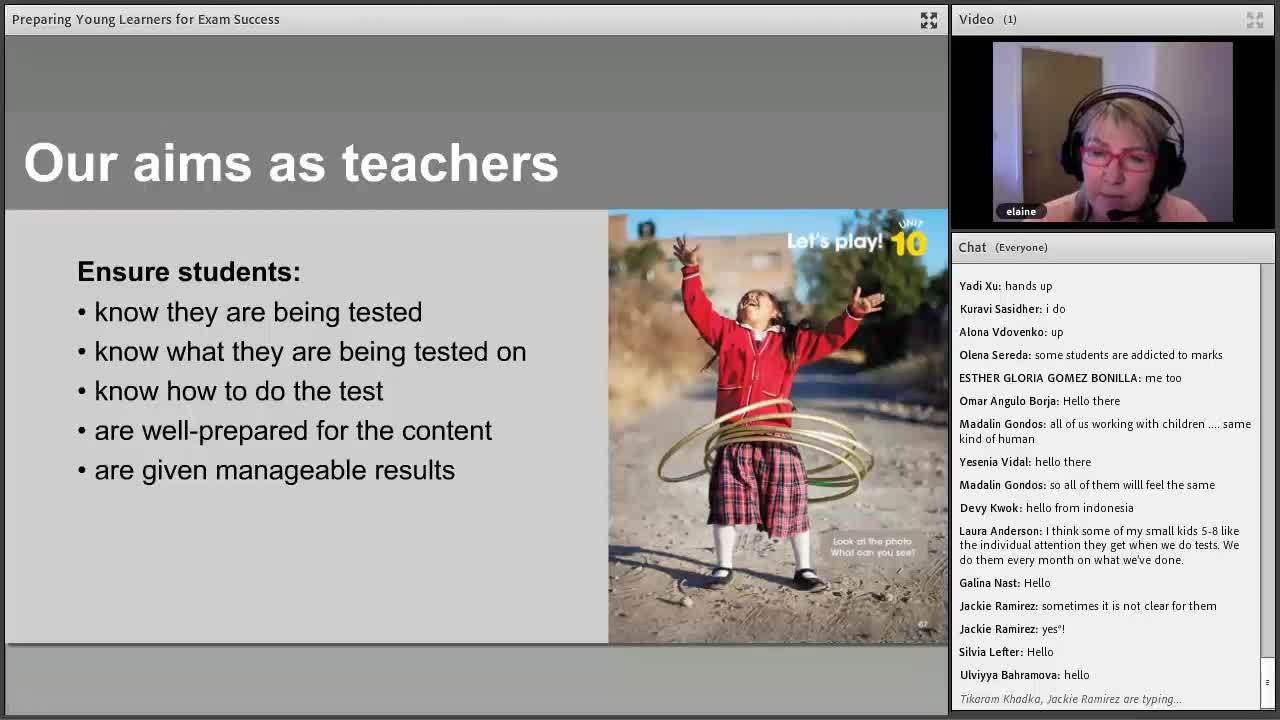In her last blog post, Elaine Boyd described three strategies for preparing young learners for exam success. Now, Elaine will share three additional strategies to help students feel relaxed and confident in formal exams.
As mentioned in my previous post, in order to do their best in a formal exam, students need to have a lot of information about the test.
They need to:
- know that they are being tested
- know what they are being tested on
- know how to do the test
- be well-prepared for the content
- be given manageable results
- be given a second opportunity
So that students have the best chance, we can use a range of strategies with our usual classroom activities which allow students to help themselves with what they need to do and to understand what the test tasks are doing. These strategies help build a feeling of success and achievement, which, in turn, helps their confidence in the exam.
Here are three more strategies to use with your usual classroom activities to help your learners approach any exam task with confidence.
1. Help my friend
Activity: After completing a task, ask students to work in pairs to help each other improve their answer or (at a higher level) to explain something to each other.
How does this help?
- It allows students to start to practice the cognitive processes of reflection.
- It improves students’ self-esteem as they can each be good at something.
- Students can learn from each other.
2. Second chance
Activity: After a speaking or writing task and a discussion of answers or errors, allow students to repeat or make a ‘clean’ copy so they have the best version. Preferably do this fairly soon after their first attempt.
How does this help?
- Young learners need a lot of repetition, especially for tasks which require fluency, e.g. in speaking and writing tasks.
- Repeating the same thing gives students a chance to be successful and, very importantly, creates a memory of success.
- Young learners especially do not learn in a linear way so they need opportunities to go back and repeat activities or tasks.
3. Own it!
Activity: After completing a task, allow students to create their own similar task, preferably with points connected with their own lives. This might only be a small part of the task, e.g. make one or two more questions. Then ask them to swap with or work with another pair to do their task. So they become the ‘testers’. Finally, allow the ‘test designers’ to check their classmates’ work.
How does this help?
- It allows students to see how a test task works so it gives them a better understanding of what’s required.
- It helps students to feel less daunted by a task because they realize they too can ‘create’ such a task.
- It helps students to feel empowered and in control of the task.
- Students can have a lot of fun by making ‘tests’ for their classmates.

For more tips on preparing young learners for exam success, you can watch the recording of Elaine’s webinar.

Be sure to let us know your experiences with these strategies in the comment box below!
Author: Elaine Boyd
Elaine has been working in language assessment for over 30 years working for a range of international exam boards. She has written several exam coursebooks for primary and secondary learners for leading international publishers. She has also developed courses in assessment literacy and formative assessment for teachers and teacher trainers. She conducts research into issues in classroom assessment and feedback and has a particular focus on primary learners. Elaine is a series consultant for Look , a seven-level primary series from National Geographic Learning.



It is very interesting to read.
It allows students to start to practice the cognitive processes of reflection.
It improves students’ self-esteem as they can each be good at something.
Students can learn from each other.
It allows students to see how a test task works so it gives them a better understanding of what’s required.
It helps students to feel less daunted by a task because they realize they too can ‘create’ such a task.
It helps students to feel empowered and in control of the task.
Students can have a lot of fun by making ‘tests’ for their classmates.
Congratulations